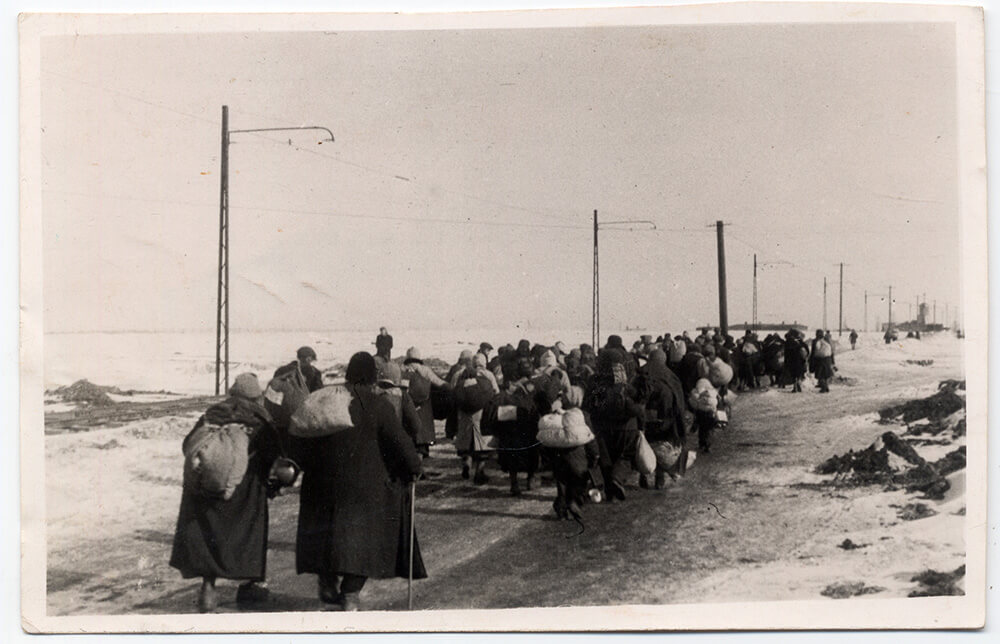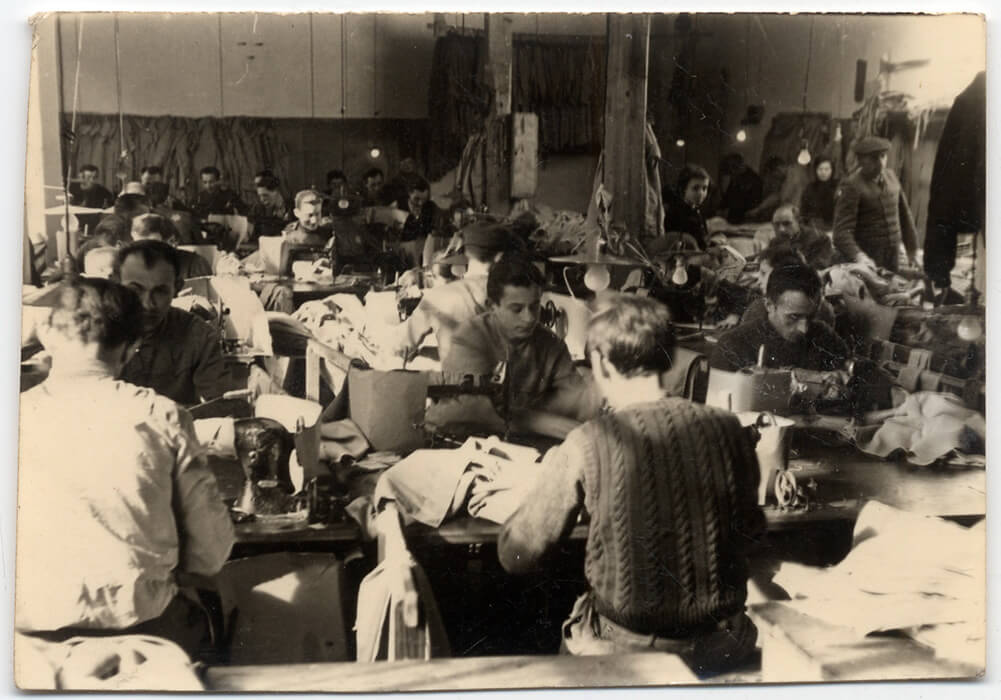Łódź / Litzmannstadt Ghetto

Ghetto inhabitants en route to the Radogoszcz/Radegast railway station for evacuation.
Jewish Museum in PragueBefore the war, Łódź was an important centre of Jewish culture in Poland. In February 1940, the German occupation authorities established a ghetto in the poorest section of the city (renamed Litzmannstadt). In total, 164,000 local Jews were forced into an area of 4 square kilometres. A further 38,500 people, including about 5,000 Czech Jews, were deported there soon afterwards. More than a fifth of the ghetto inhabitants died as a result of overcrowding, dire living conditions, lack of food, poor hygiene, and disease. The Jewish self-government tried to find employment for as many able-bodied people in the ghetto as possible. The so-called “evacuations” from the ghetto constituted a danger to all the inmates. From the beginning of 1942, prisoners were taken by train from the Radogoszcz/Radegast railway station directly to Chelmno/Kulmhof, where they were murdered in mobile gas vans. Later transports were dispatched to Auschwitz-Birkenau. The liquidation of the ghetto began in the summer of 1944. The last train left for Auschwitz-Birkenau on 30 August 1944. A thousand Jews remained in the ghetto as an “Aufrämungs Kommando” (clean-up squad), most of whom were then sent to concentration camps in Germany.
Five transports (designated by the letters A to E) were dispatched from Prague to the Łódź ghetto between 16 October and 3 November 1941. 1,956 Jews from the Prague transports were slated for “evacuation” in May 1942. Only 282 of the 5,003 deportees lived to see the liberation.
